Home> Technical Articles> Working Effectively With A Pressure Compensating Valve
- AddressNo.1875 East Changjiang Road, New District, Wuxi, Jiangsu,China
- Factory AddressNo.1875 East Changjiang Road, New District, Wuxi, Jiangsu, China
- Worktime9:00-18:00
- Phone(Working Time)86-510-85310167
Pressure compensating valves are essential components of hydraulic systems that help regulate the pressure of the fluid within the system. These valves are particularly important in hydraulic systems that experience varying flow rates and pressure requirements. In this article, we will discuss pressure compensating valves, their functions, benefits, applications, installation, maintenance, and choosing the right pressure compensating valve.
Whether you are a hydraulic system engineer, operator, or just interested in learning about hydraulic systems, this article will provide you with the essential knowledge you need to know about pressure compensating valves. By the end of this article, you will have a better understanding of how pressure compensating valves work, their advantages, and how to select the right valve for your hydraulic system. So, let's dive into the world of pressure compensating valves and discover how they can improve the efficiency and performance of hydraulic systems.
What is a Pressure Compensating Valve?
A pressure compensating valve (PCV) is a type of hydraulic valve that is designed to maintain a constant pressure level in a hydraulic system. It does this by adjusting the flow rate of the hydraulic fluid in response to changes in pressure. The valve consists of a pressure compensator, which is typically a spool or poppet valve, that is responsible for regulating the flow rate.
There are several different types of pressure compensating valves available, including spool valves, poppet valves, and proportional valves. Each type has its own unique advantages and disadvantages, and the choice of valve will depend on the specific needs of the hydraulic system.
Pressure compensating valves are used in a wide range of hydraulic systems, including construction equipment, agricultural machinery, and industrial machinery. They are particularly useful in applications where the hydraulic flow rate can vary widely, as they help to maintain a constant pressure level despite changes in flow rate.
Overall, pressure compensating valves are essential components of hydraulic systems that help to maintain consistent performance and prevent damage to the system due to pressure fluctuations.

Advantages of a Pressure Compensating Valve
Pressure compensating valves offer several advantages in hydraulic systems. One of the key benefits is their ability to maintain a constant pressure level despite varying flow rates. This ensures that the hydraulic system operates efficiently and avoids damage to the system due to pressure fluctuations.
Another advantage of using a pressure compensating valve is that it can improve the efficiency of hydraulic systems and reduce energy consumption. By maintaining a constant pressure level, the hydraulic system can operate at optimal efficiency, which reduces the amount of energy required to power the system.
Pressure compensating valves are also beneficial in reducing wear and tear on the hydraulic system components. By maintaining a constant pressure level, the valve ensures that the hydraulic system operates smoothly and avoids any sudden pressure changes that can cause damage to the system.
In addition, pressure compensating valves can help to reduce noise levels in hydraulic systems. By maintaining a constant pressure level, the valve reduces the likelihood of pressure fluctuations, which can cause noise in the system.
Overall, pressure compensating valves offer several advantages in hydraulic systems, including maintaining a constant pressure level, improving efficiency, reducing energy consumption, reducing wear and tear, and reducing noise levels.
Applications of a Pressure Compensating Valve
Pressure compensating valves are commonly used in various hydraulic systems. Here are some examples of their applications:
-
Agriculture - Pressure compensating valves are used in agricultural machinery such as tractors, combines, and sprayers to control the flow of hydraulic fluids. They ensure that the hydraulic system maintains a constant pressure level despite variations in flow rates. This is particularly important in farming applications where precision and consistency are essential.
-
Construction - In construction equipment, pressure compensating valves are used to control the speed and force of hydraulic cylinders. They maintain a constant pressure level to ensure smooth and consistent operation of the equipment.
-
Manufacturing - Pressure compensating valves are used in manufacturing machinery such as injection molding machines, metal stamping presses, and robotics to control the flow of hydraulic fluids. They maintain a constant pressure level despite variations in flow rates, ensuring consistent and precise operation of the equipment.
-
Aerospace - Pressure compensating valves are used in hydraulic systems in aircraft to control the flow of hydraulic fluids. They maintain a constant pressure level despite variations in flow rates, ensuring that critical systems such as landing gear and brakes operate reliably and safely.
-
Automotive - In automotive applications, pressure compensating valves are used in power steering systems to regulate the flow of hydraulic fluid. They maintain a constant pressure level despite variations in flow rates, ensuring that the power steering system operates smoothly and efficiently.
Overall, pressure compensating valves are used in many applications where consistent and precise hydraulic operation is essential. Their ability to maintain a constant pressure level despite variations in flow rates makes them an essential component in hydraulic systems across various industries.
Installation and Maintenance of a Pressure Compensating Valve
Proper installation and maintenance of a pressure compensating valve are crucial for ensuring its effective operation and longevity. Here are the steps required for installing and maintaining a pressure compensating valve in a hydraulic system:
Installation of a Pressure Compensating Valve
- Ensure the hydraulic system is shut off and depressurized before installation.
- Select the appropriate valve based on the system's flow rate and pressure requirements.
- Determine the valve's location in the system and mark the appropriate location for installation.
- Install the valve into the system, ensuring that it's properly aligned and secured.
- Connect the valve's hydraulic lines to the system, ensuring that they're securely connected and free of leaks.
- Turn on the hydraulic system and monitor the valve's operation to ensure it's functioning correctly.
Maintenance of a Pressure Compensating Valve
- Regularly inspect the valve and its hydraulic lines for any signs of wear, damage, or leaks.
- Clean the valve regularly to prevent the buildup of debris or contaminants that could affect its operation.
- Check the valve's pressure setting and adjust it if necessary to maintain the desired pressure level.
- Monitor the valve's operation and performance regularly to ensure it's functioning as intended.
- Replace the valve if it's damaged, worn out, or no longer functioning correctly.
Troubleshooting Common Issues with Pressure Compensating Valves
Here are some tips for troubleshooting common issues with pressure compensating valves:
- If the valve fails to maintain a constant pressure level, check for blockages or restrictions in the hydraulic lines or valve.
- If the valve is leaking, check for loose or damaged fittings, seals, or gaskets.
- If the valve is noisy, check for cavitation or aeration in the system, and adjust the valve's pressure setting accordingly.
- If the valve fails to respond to pressure changes, check for damage or wear on the valve's internal components.
By following these installation and maintenance guidelines and troubleshooting tips, you can ensure that your pressure compensating valve operates effectively and efficiently in your hydraulic system.
Choosing the Right Pressure Compensating Valve
When it comes to selecting a pressure compensating valve for a hydraulic system, there are several factors to consider. Choosing the right valve can make all the difference in ensuring optimal system performance and efficiency.
Here are some key factors to consider when selecting a pressure compensating valve:
-
Flow rate: It's important to choose a valve with the correct flow rate for your specific application. The flow rate is the volume of fluid that the valve can allow to pass through per unit of time. If the valve's flow rate is too low, it can cause the hydraulic system to operate inefficiently. If it's too high, it can lead to system damage and reduced performance.
-
Pressure rating: The pressure rating is the maximum pressure that the valve can withstand before it fails. It's crucial to choose a valve with a pressure rating that's suitable for your hydraulic system's requirements. If the pressure rating is too low, the valve can fail under pressure, causing system damage and downtime.
-
Type of fluid: The type of fluid used in the hydraulic system can impact the valve's performance and lifespan. Some valves are designed for use with specific types of fluid, such as hydraulic oil or water-based fluids. It's important to choose a valve that's compatible with the fluid being used in the system to ensure optimal performance and longevity.
-
Temperature range: The temperature range of the hydraulic system can also impact the valve's performance. If the system operates at high temperatures, it's crucial to choose a valve that can withstand those temperatures without failing. Similarly, if the system operates at low temperatures, the valve should be able to function properly in those conditions.
-
Environmental factors: The environment in which the hydraulic system operates can also impact the valve's performance. If the system operates in a corrosive or abrasive environment, it's important to choose a valve that can withstand those conditions without deteriorating. Additionally, if the system operates in an environment with high levels of vibration or shock, the valve should be able to withstand those forces without failing.
-
Additional features: There are several additional features available in pressure compensating valves that can enhance their performance and efficiency. For example, some valves have built-in filtration to remove contaminants from the fluid, while others have adjustable pressure settings to allow for greater control over the system's pressure levels. It's important to consider these features when selecting a valve for your hydraulic system.
Overall, selecting the right pressure compensating valve for a hydraulic system is crucial for ensuring optimal performance and efficiency. By considering factors such as flow rate, pressure rating, fluid type, temperature range, environmental factors, and additional features, you can choose a valve that meets your specific application requirements.

In conclusion, pressure compensating valves are crucial components in hydraulic systems that help to maintain a constant pressure level despite varying flow rates. They offer numerous advantages, including improving system efficiency, reducing energy consumption, and minimizing wear and tear on the system. Pressure compensating valves are commonly used in various applications, such as mobile hydraulics, industrial hydraulics, and agriculture. Proper installation and regular maintenance are necessary to ensure that the valve continues to operate effectively. When choosing a pressure compensating valve, it's essential to consider factors such as flow rate, pressure rating, and the specific features required for the application. By selecting the right pressure compensating valve, you can ensure that your hydraulic system operates optimally, with maximum efficiency and minimal downtime.


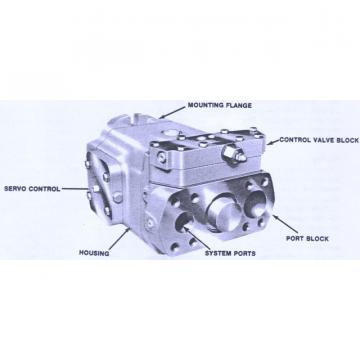 Dansion gold cup piston pump P30P-8L5E-9A4-A00-0B0
Dansion gold cup piston pump P30P-8L5E-9A4-A00-0B0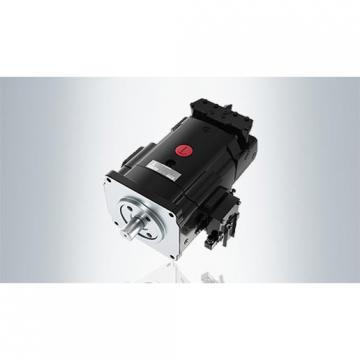 Dansion gold cup piston pump P30P-8L5E-9A2-B00-0C0
Dansion gold cup piston pump P30P-8L5E-9A2-B00-0C0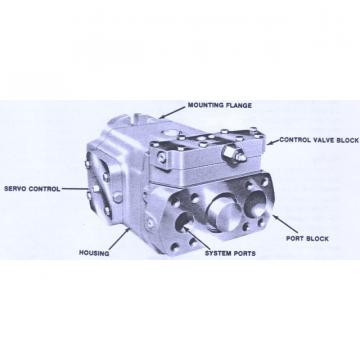 Dansion gold cup piston pump P30L-8L5E-9A7-A0X-B0
Dansion gold cup piston pump P30L-8L5E-9A7-A0X-B0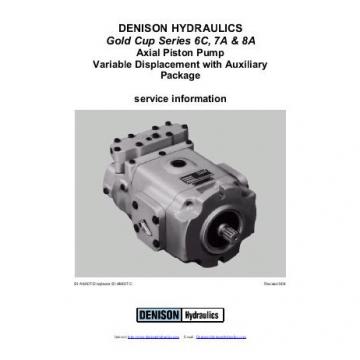 Dansion gold cup piston pump P30P-2R5E-9A7-B00-0C0
Dansion gold cup piston pump P30P-2R5E-9A7-B00-0C0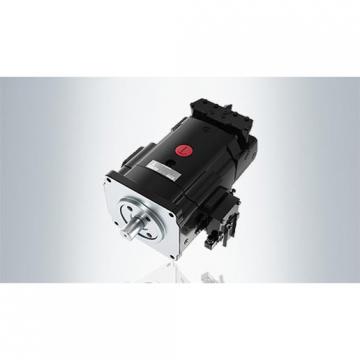 Dansion gold cup piston pump P30L-7R5E-9A2-A0X-D0
Dansion gold cup piston pump P30L-7R5E-9A2-A0X-D0